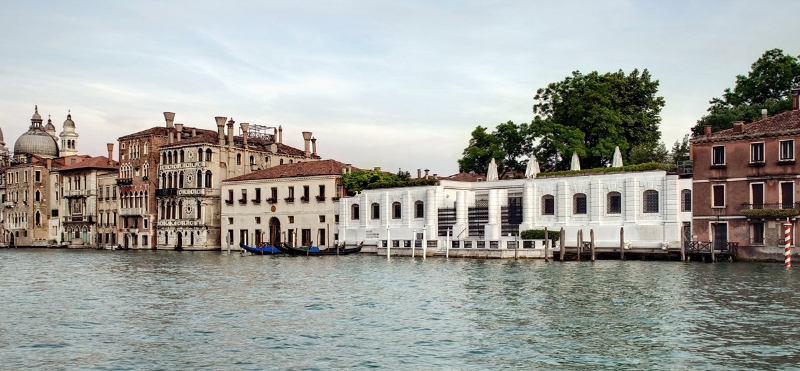Peggy Guggenheim Collection
EMAIL: info@guggenheim-venice.it
TELEFONO E FAX: 0412405.411
WEBSITE: www.guggenheim-venice.it
LOCATION: Palazzo Venier dei Leoni via Dorsoduro, 701 VENEZIA (VE)
The private apartment of Peggy Guggenheim, transformed in museum, conserve today 250 works, of which only 180 visible ones to the public. Peggy Guggenheim Collection is an original collection of contemporary art, made possible by the watchful eye of the lively Peggy Guggheneim, brilliant heiress, merchant and patron of arts, who bought this uncompleted palazzo (4 floors were missing) on the Grand Canal (Ca’ Corner dei Leoni) to accommodate her collection of paintings. When you enter you can either stop in the garden (were you will find many sculptures by various artists such as Henry More and Alberto Giacometti) or visit the halls of the palazzo (where she used to live). The works are divided according to the figurative movement they belong to: on the halls left of the entrance door feature the works from the Cubist avant-garde to Orphism, represented by Delaunay and Kupka, or Giacomo Balla’s futurism (Automobile=noise+speed) and Gino Severini’s Sea=dancer; and then Kandisky or Piet Mondrian representatives of abstractionism, but most of all note the main exponents of surrealism, such as Max Ernst, Joan Mirò or Picasso’s La Baiguada, and Giorgio De Chirico’s The Red Tower.
In the halls left of the entrance door there are more surrealist masterpieces: Salvador Dalì’s Birth of Liquid Desires, Magritte’s The Voice of the Air, other minor works of the same movement: The Postman-Cheval by Max Ernst and Study for Chimpanzee by Francis Bacon. The area dedicated to post-World War II art is rich too, in particular with the works of a young exponent of Expressionism: Jackson Pollok.
Admire these paintings by the most famous exponents of the European and American avant-gardes note some objects that used to be part of the furnishing, such as Alexander Calder’s furniture (he made the incredible silver headboard which used to hang over Peggy).
On the walls many photographs hang showing the original look of the halls. The Barchessa, the wing of the building that overlooks the garden, has been hosting Gianni Mattioli Collection since 1997 and contains many masterpieces of Italian futurism. Finally, you can give a look at the modern, original and well-stocked book-shop, or stop for a while at the Museum Café.



